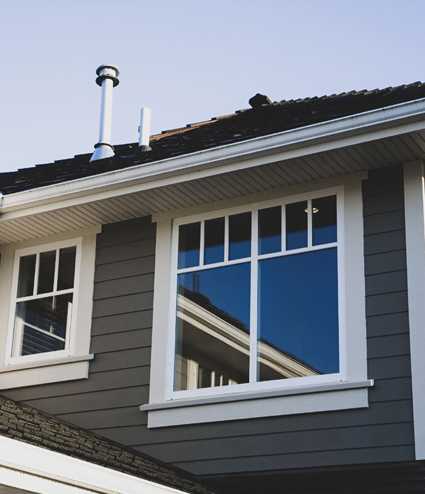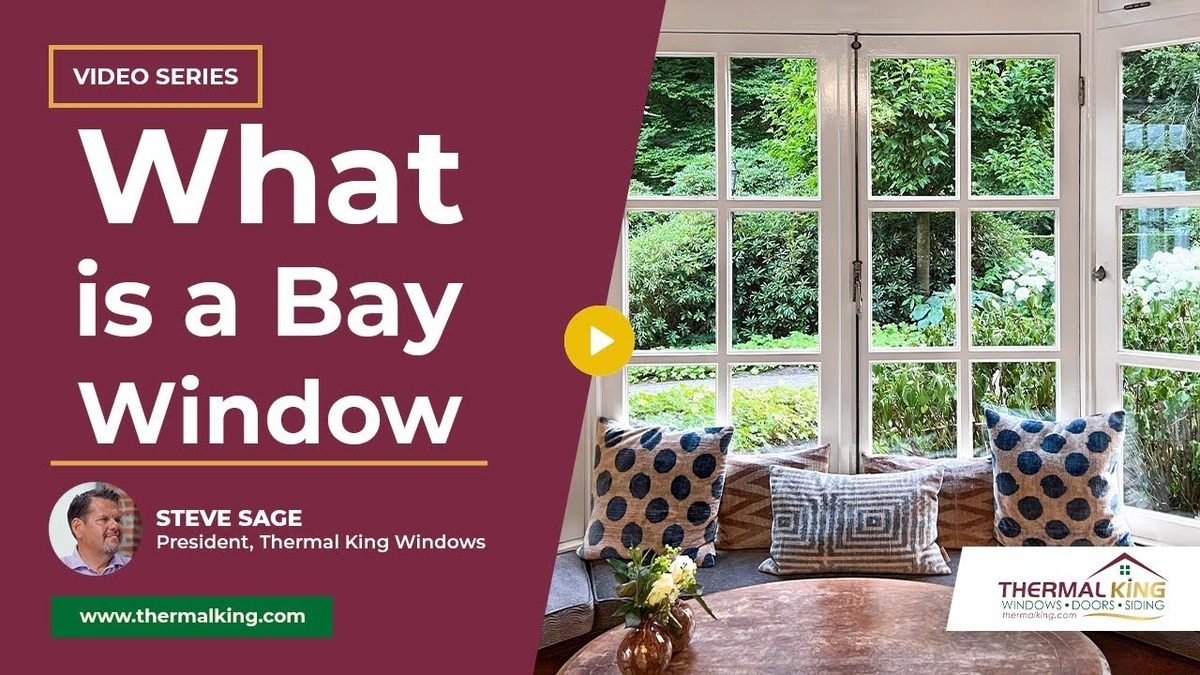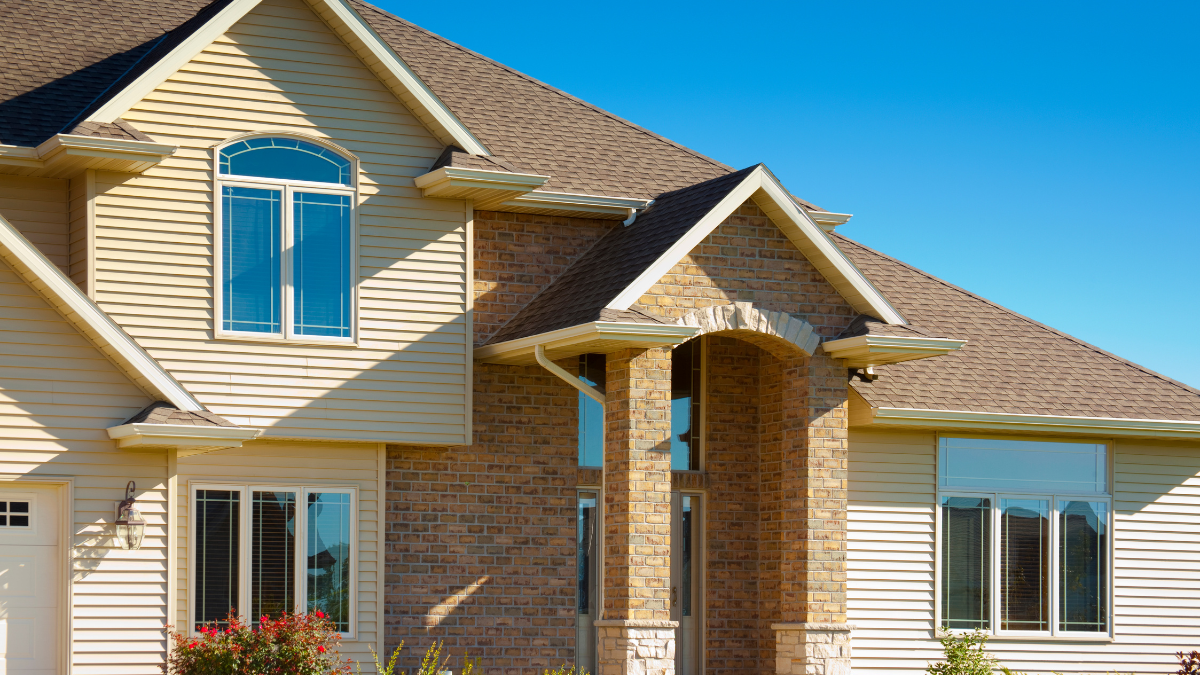Siding plays a crucial role in protecting a home from the elements while also contributing to its aesthetic appeal. With a variety of materials available, homeowners often find themselves overwhelmed by the choices. This article will explore four popular types of siding: fiber cement, vinyl, steel, and engineered wood. Each material has its unique characteristics, benefits, and drawbacks, making it essential to understand them before making a decision.
At Thermal King, we’ve helped thousands of Omaha homeowners find the perfect siding for their home and budget. This article will compare these two siding options by examining their composition, pros and cons, durability, maintenance needs, and cost.
Introduction to Siding
In addition to the primary function of protection, siding also serves as a significant factor in energy efficiency. Properly installed siding can help regulate a home’s temperature, reducing heating and cooling costs. Insulated siding options are available, which can provide an extra layer of thermal protection. Furthermore, the color and texture of siding can influence how much heat is absorbed or reflected, impacting overall energy performance. Homeowners should consider these aspects, especially in regions with extreme weather conditions, where energy efficiency can lead to substantial savings over time.
Moreover, the choice of siding can also affect the resale value of a home. Certain materials, like fiber cement and engineered wood, are often seen as premium options that can enhance curb appeal and attract potential buyers. On the other hand, while vinyl siding is typically more affordable, it may not offer the same level of durability or aesthetic appeal as higher-end materials. Understanding the long-term implications of siding choices can help homeowners make informed decisions that align with their financial goals and personal style.
Fiber Cement Siding
Fiber cement siding has gained popularity due to its durability and versatility. Made from a mixture of cement, sand, and cellulose fibers, this siding option is designed to withstand harsh weather conditions while providing a beautiful finish. Its composition allows it to mimic the appearance of wood, stucco, or masonry, giving homeowners a wide range of aesthetic choices without compromising on performance.
Benefits of Fiber Cement
One of the primary advantages of fiber cement siding is its resistance to rot, insects, and fire. This makes it an excellent choice for homeowners in areas prone to extreme weather or pest infestations. Additionally, fiber cement siding is available in various styles and colors, allowing for customization that can enhance a home’s curb appeal. The ability to paint or stain fiber cement also means that homeowners can easily update the look of their home over time, adapting to changing trends or personal preferences.
Another significant benefit is its longevity. With proper maintenance, fiber cement siding can last up to 50 years or more, making it a worthwhile investment. Furthermore, it requires minimal upkeep, typically only needing a fresh coat of paint every 10 to 15 years. This durability not only saves homeowners money in the long run but also contributes to reducing waste, as fewer materials need to be replaced over time. Additionally, many manufacturers offer warranties that can provide peace of mind regarding the product’s lifespan and performance.
Drawbacks of Fiber Cement
Despite its many advantages, fiber cement siding does have some drawbacks. One of the most notable is its weight; it is heavier than other siding materials, which can complicate installation and may require additional structural support. Additionally, while fiber cement is generally low-maintenance, it can be more labor-intensive to install compared to lighter options. Homeowners should consider hiring experienced professionals for installation to ensure that it is done correctly, as improper installation can lead to issues such as water infiltration or decreased energy efficiency.
Cost is another consideration. While fiber cement siding is durable and long-lasting, the initial investment can be higher than other materials, which may not fit every homeowner’s budget. However, when evaluating the overall cost, it’s essential to consider the long-term savings on repairs and replacements. Moreover, the energy efficiency of fiber cement siding can contribute to lower heating and cooling bills, further offsetting the upfront costs. As energy efficiency becomes increasingly important, many homeowners find that the benefits of fiber cement siding outweigh the initial financial commitment.
Vinyl Siding
Vinyl siding is one of the most popular siding options in North America, known for its affordability and ease of installation. Made from polyvinyl chloride (PVC), this material comes in a wide range of colors and styles, making it a versatile choice for many homeowners.
Advantages of Vinyl Siding
One of the most significant advantages of vinyl siding is its cost-effectiveness. It is one of the most affordable siding options available, making it an attractive choice for budget-conscious homeowners. Additionally, vinyl siding requires very little maintenance, as it is resistant to fading, peeling, and cracking. A simple wash with soap and water is often all that is needed to keep it looking new.
Vinyl siding is also lightweight, which makes it easier to install compared to heavier materials like fiber cement or steel. This can lead to lower labor costs during installation, further enhancing its affordability.
Disadvantages of Vinyl Siding
While vinyl siding has many benefits, it is not without its drawbacks. One major concern is its susceptibility to extreme temperatures. In very hot weather, vinyl can warp or melt, while in colder climates, it may become brittle and crack. This can limit its suitability in certain regions.
Additionally, while vinyl siding is available in various colors, it cannot be painted. This means that if a homeowner wants to change the color of their siding, they will need to replace it entirely. Furthermore, vinyl siding is not as environmentally friendly as some other materials, as it is made from plastic and can take a long time to decompose.
Steel Siding
Steel siding is another robust option that offers exceptional durability and security. Made from galvanized steel, this siding is designed to withstand harsh weather conditions, making it a reliable choice for homeowners looking for long-lasting protection.
Benefits of Steel Siding
One of the most significant benefits of steel siding is its strength. It is resistant to dents, impacts, and even fire, making it an excellent option for homeowners in areas prone to extreme weather or wildfires. Additionally, steel siding is impervious to pests, such as termites, which can be a concern with wood siding.
Another advantage is its low maintenance requirements. Steel siding typically only needs to be washed occasionally to maintain its appearance, and it does not require painting as often as other materials. Many steel siding options come with a factory-applied finish that can last for years without fading or peeling.
Drawbacks of Steel Siding
Despite its many benefits, steel siding does have some drawbacks. One of the primary concerns is its cost. Steel siding can be more expensive than vinyl or engineered wood options, which may deter some homeowners. Additionally, while it is durable, it can be prone to rust if not properly maintained, especially in coastal areas where saltwater exposure is a concern.
Another consideration is insulation. Steel siding does not provide as much insulation as other materials, which may lead to higher energy costs in extreme temperatures. Homeowners may need to invest in additional insulation to improve energy efficiency.
Engineered Wood Siding
Engineered wood siding is a popular choice for homeowners looking for the appearance of traditional wood without the associated maintenance. Made from wood fibers and resins, this siding option offers a blend of durability and aesthetic appeal.
Advantages of Engineered Wood Siding
One of the key advantages of engineered wood siding is its appearance. It can mimic the look of natural wood, providing a warm and inviting aesthetic for homes. Additionally, it is available in various styles, colors, and textures, allowing for customization to suit individual tastes.
Engineered wood is also designed to be resistant to pests and rot, making it a more durable option than traditional wood siding. It typically comes with a factory-applied finish that can last for years, reducing the need for frequent painting or staining.
Disadvantages of Engineered Wood Siding
While engineered wood siding has many benefits, it is not without its drawbacks. One concern is its susceptibility to moisture. If not properly installed and maintained, engineered wood can be prone to swelling or warping in humid conditions. This can lead to costly repairs if not addressed promptly.
Additionally, while it is generally more affordable than fiber cement or steel siding, the cost can still be higher than vinyl options. Homeowners should weigh the aesthetic benefits against the potential costs and maintenance requirements.
Comparative Analysis
When choosing the right siding for a home, it is essential to consider various factors, including durability, maintenance, cost, and aesthetic appeal. Each of the four siding types discussed has its unique strengths and weaknesses.
Durability and Maintenance
Fiber cement and steel siding are known for their exceptional durability, making them ideal for homeowners looking for long-lasting protection. Both options require minimal maintenance, although fiber cement may require periodic painting. Vinyl siding, while cost-effective, may not hold up as well in extreme temperatures. Engineered wood offers a beautiful appearance but requires more attention to moisture management.
Cost Considerations
Vinyl siding is typically the most affordable option, making it a popular choice for budget-conscious homeowners. Fiber cement and steel siding come with higher upfront costs but can provide better long-term value due to their durability. Engineered wood falls somewhere in between, offering a balance of affordability and aesthetic appeal.
Aesthetic Appeal
For homeowners prioritizing appearance, engineered wood and fiber cement siding can provide a stunning finish that enhances curb appeal. Vinyl siding offers a wide range of colors but may lack the depth of natural materials. Steel siding, while sleek and modern, may not suit every architectural style.
Siding Replacement in Omaha – Next Steps
Choosing the right siding for a home is a significant decision that requires careful consideration of various factors. Fiber cement, vinyl, steel, and engineered wood each have their unique advantages and disadvantages, making them suitable for different needs and preferences.
If your ready to reap the benefits of enhanced curb appeal and lower energy bills that come with new siding, contact the siding experts at Thermal King today!




